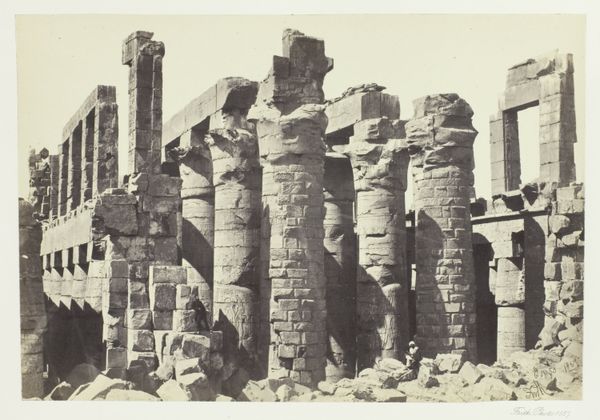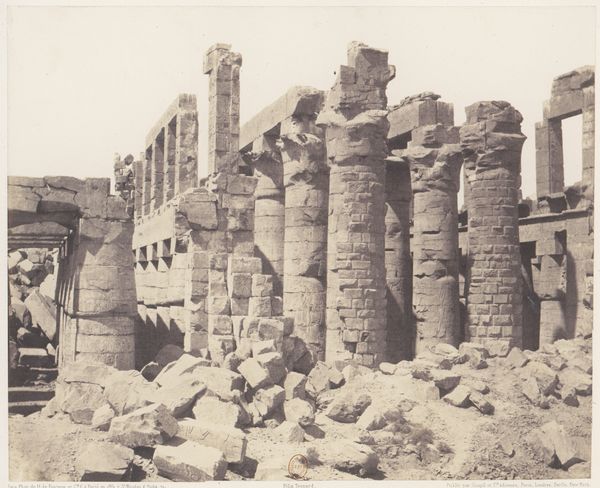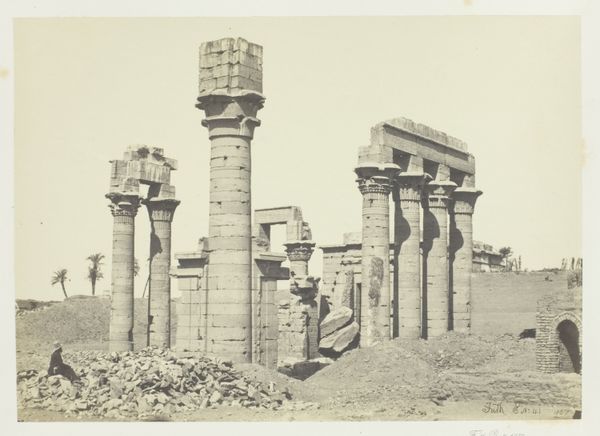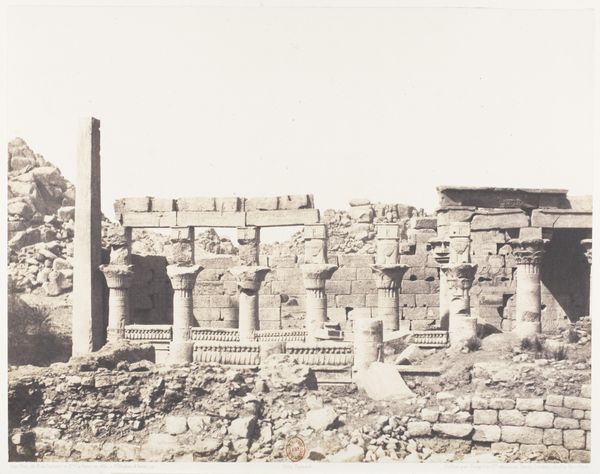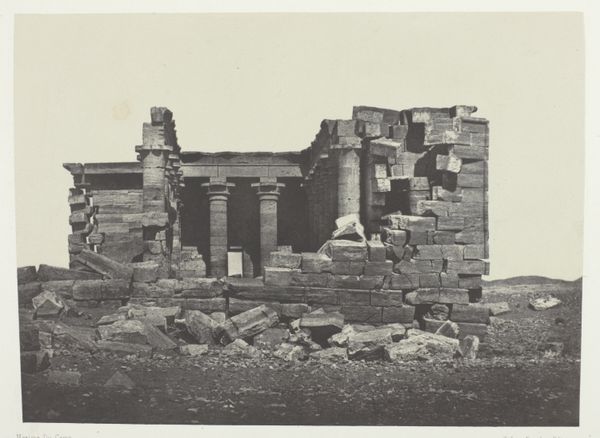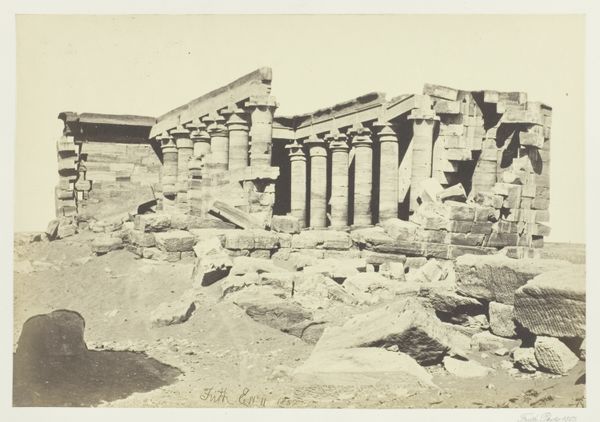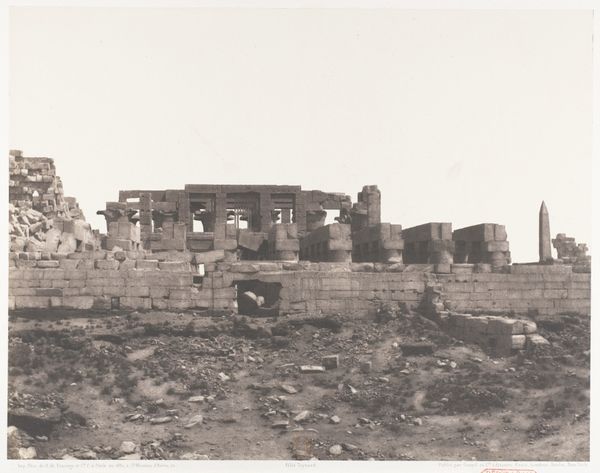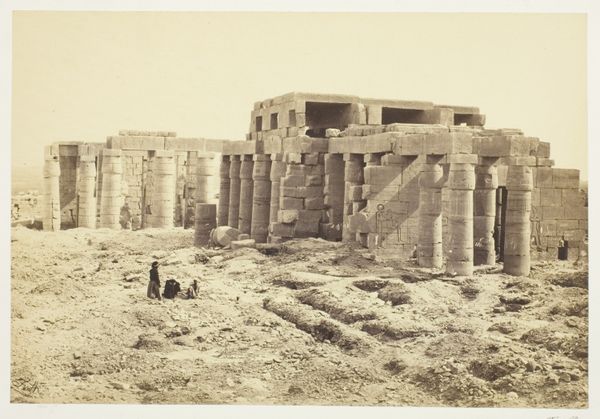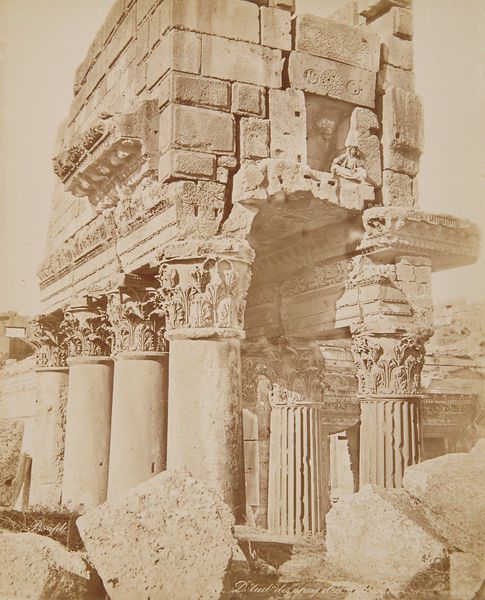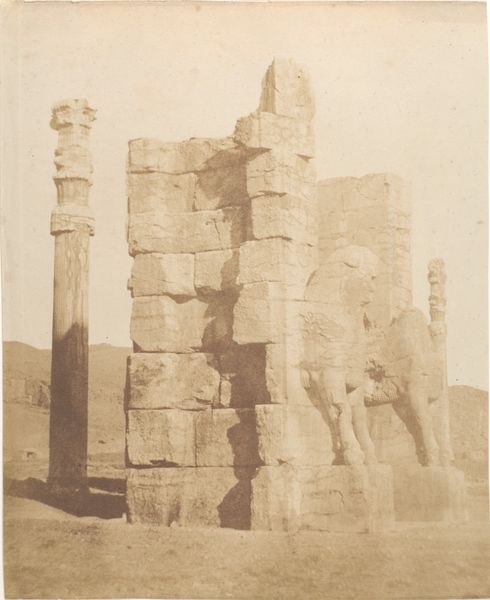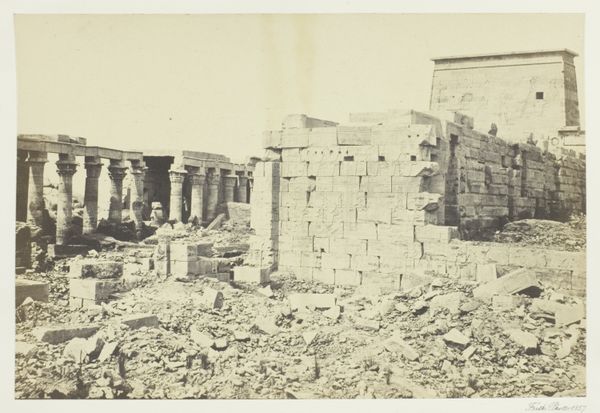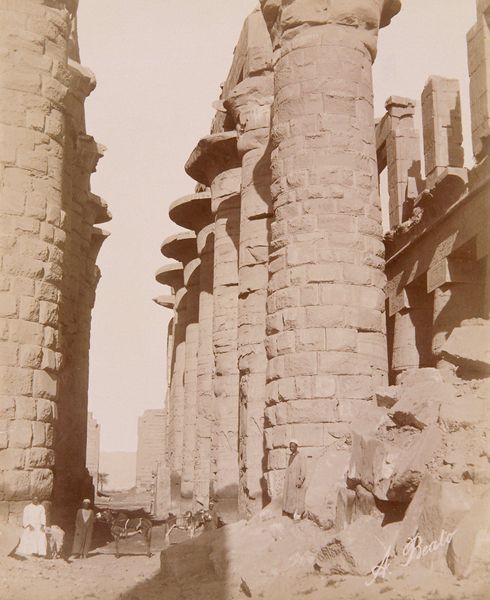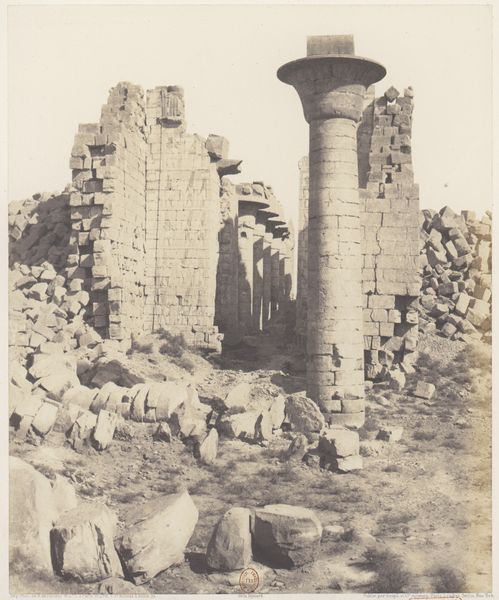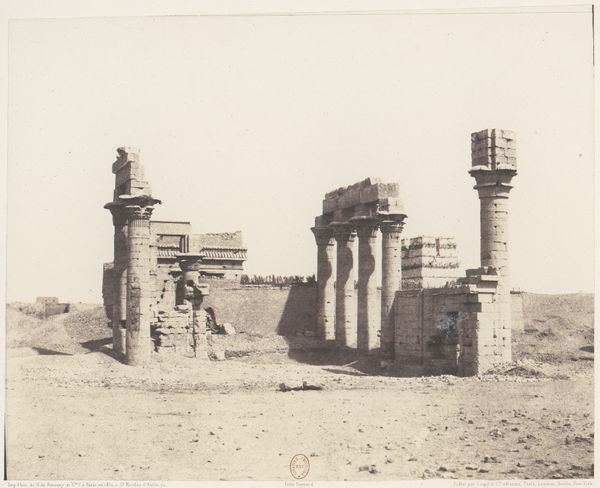
silver, print, photography
#
silver
# print
#
organic shape
#
landscape
#
ancient-egyptian-art
#
photography
#
ancient-mediterranean
#
men
#
history-painting
Dimensions: 16.3 × 22.7 cm (image/paper); 31.6 × 43.4 cm (mount)
Copyright: Public Domain
Curator: Francis Frith's 1857 silver print, "Hall of Columns," presents a mesmerizing view of ancient Egypt. The work is part of the Art Institute of Chicago's collection. Editor: Immediately, I'm struck by the sheer mass of the architectural forms. The sepia tones evoke a sense of timelessness and monumental scale. It’s crumbling yet imposing. Curator: Absolutely. Frith was keen to capture the symbolic weight of these ancient ruins. Notice the hieroglyphs, faint yet still present on the massive columns. They're visual echoes of a civilization's memory, potent reminders of a past world. Editor: The composition is fascinating. It uses a rather limited tonal range to create a depth of field. See how the light models form and carves volumes through highlights and shadows; Frith clearly understands tonal relationships as organizing structures within the pictorial space. Curator: Consider also the human figures near the base of the columns. Their inclusion invites contemplation on the relationship between humankind and history, almost dwarfed by these once highly decorated monoliths. What narrative do they hold within such ruins? Editor: Their presence anchors the vastness, giving us a sense of proportion but also of entropy. Their somber attire, against the ruinous columns, is heavy with the implications of temporality and history. Curator: It’s hard to look away from the realization that we are encountering this symbolic cultural nexus through Frith’s vision as he bore witness so many years ago. The romantic ideal of these past wonders holds a certain kind of power over viewers still. Editor: A very convincing piece for how light, tone, and even scale can profoundly structure meaning and, through this structure, inform historical insight. I wonder, what might later practitioners of photography learned from it?
Comments
No comments
Be the first to comment and join the conversation on the ultimate creative platform.
